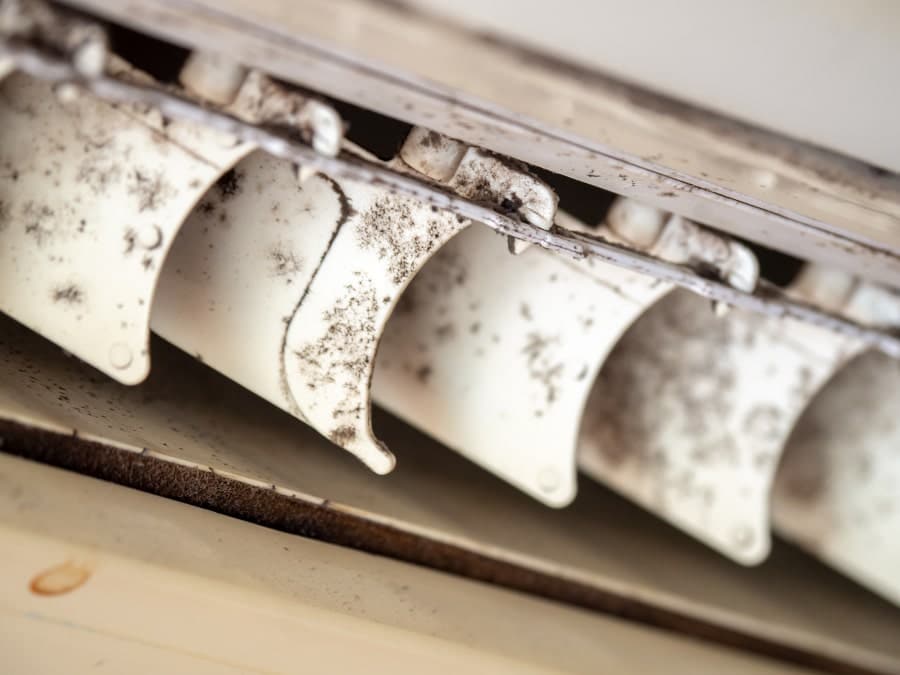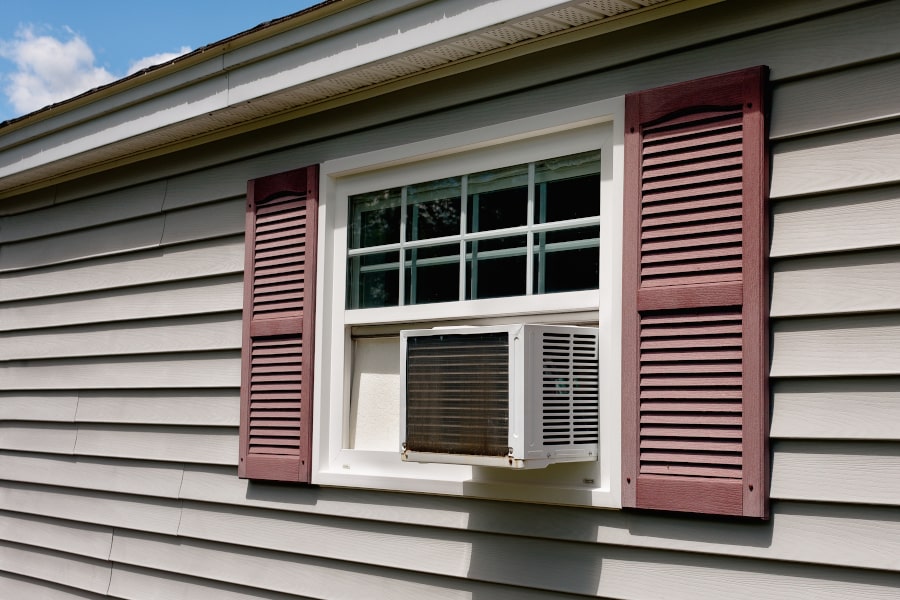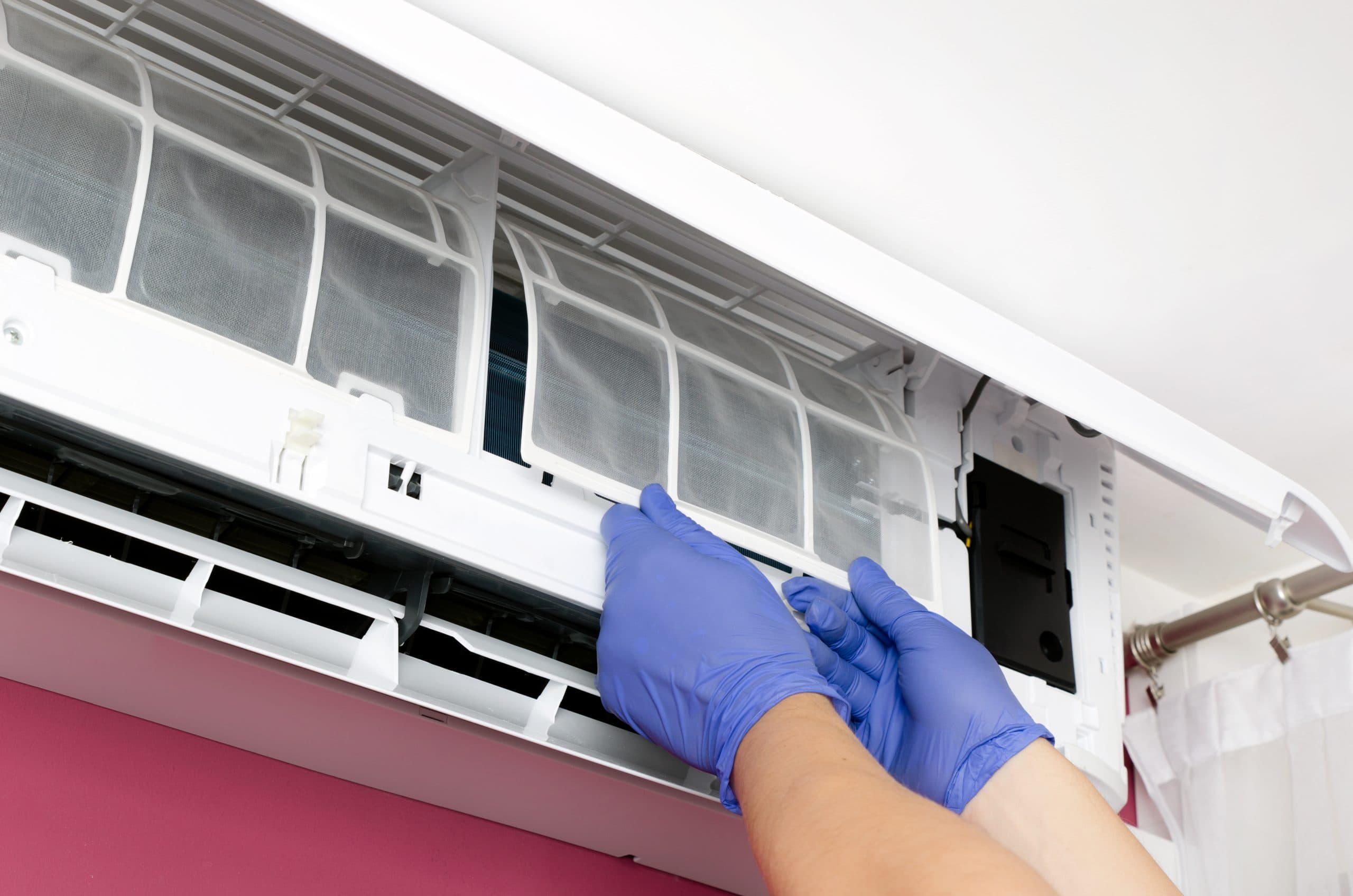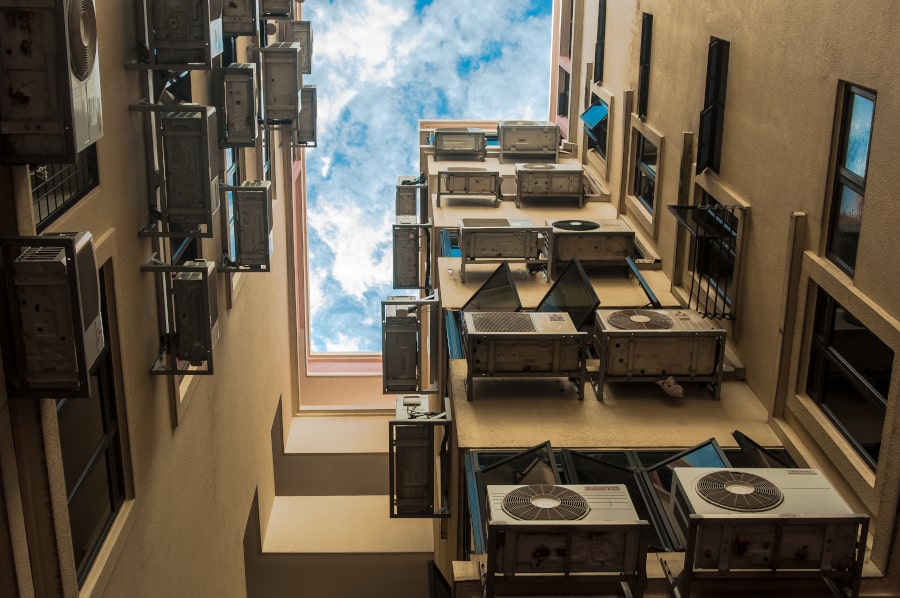If your air conditioner emits bursts of the foul odor along with chilled air, it might be the mold growth in your air conditioner that’s causing it. The first sign of mold formation in your air conditioner unit is the musty and damp smell.
Rectifying this problem before it worsens is essential before your entire house starts to smell mildew. Moreover, if you delay fixing this problem, it can cause many health issues, like wheezing, coughing, sneezing, and itchy throat as you breathe in mold spores.
Whether the mold is visible or if you suspect there’s mold growth behind the vent grill, you shouldn’t ignore it. Let us discuss elaborately to understand if the job at hand can be fixed through the DIY route or if you need to hire a professional to clean your air conditioner unit.
In some cases, you might have to buy a new air conditioner unit if the mold infestation has penetrated deep into the vital parts of the air conditioner and the damage is irreversible.
Can Mold Growth in Air Conditioner Units Be Dangerous?

Before you go ahead and try to determine if your air conditioner needs to be replaced or cleaned, let us first ascertain how dangerous mold growth can be.
There are many different reasons why mold growth occurs. If left unchecked, it can cause numerous health hazards and put you and your family at risk.
Some of the common symptoms of exposure to mold include –
- Irritated and Itchy Throat
- Nasal Congestion
- Skin Rash
- Coughing
- Wheezing
- Sneezing
- Red Eyes
- Itchy Eyes
For people already suffering from a mold allergy, the symptoms mentioned above can be far more severe. Mold growth in a window air conditioner unit can be easily fixed as the affected area is less.
However, the cleaning job is by far more complex if mold growth occurs in the central air conditioner’s ducts or components.
Mold spores can easily infest the entire network of central air conditioner’s ductworks, causing every room in your house to have poor indoor air quality. In this case, it is suggested you call for professional assistance.
Primary Reasons Why Black Mold Occurs in Air Conditioners

Irrespective of which brand or how expensive the air conditioner may be, it can develop mold if unused for long.
When the air conditioners are not commonly used during the winter months, the vents of the air conditioner can collect dust. With optimal conditions and humidity, molds can not only grow but thrive on the dust particles that have accumulated in the vents.
You won’t notice black mold until the summer months when you start operating the air conditioner again, and mildew odor spreads through the room.
One other reason for mold formation is when there’s a leakage in the condenser coil. When the evaporator coil is damaged and leaking, it will lead to moisture build-up.
The presence of humidity and dust provides suitable conditions for the development of mold. The mold growth is further accelerated when the filter is dirty as the dust accumulated in it serves as food for mold.
Today, some air conditioners have a “check filter” light, which indicates when the filter is dirty and needs to be cleaned. Referring to the air conditioner manual would also enlighten you about the standard practices to keep mold formation at bay and the air conditioner’s health in tip-top condition.
Essentials Steps To Remove Mold From Air Conditioner

To get rid of mold from your window air conditioner, you’ll need a few basic household items. Here is the list of the supplies you’ll need –
- Protective Eyewear
- Cloth
- Face Mask
- Bucket
- Gloves
- Laundry Detergent
- Dish Soap
- Mold Removal Solution
- Water
- Vacuum Cleaner
- Bleach
- Scrubber
- Screwdriver
Safety Tips to Keep In Mind during Mold Removal
Guesswork doesn’t work when it comes to mold removal. First of all, don’t try to remove the air conditioner unit yourself. You would have to remove the air conditioner unit from the window to check the extent of mold growth. With some help, remove the window air conditioner and place it somewhere safe and sturdy.
It is recommended you do the cleaning outdoors to ensure the room doesn’t get filled with mildew odor or pose a health hazard for you. Cleaning the AC unit outdoors will provide sufficient fresh air as you combat mold or any fumes coming off the mold removal cleaner.
Air Conditioner United Mold Removal Instructions

Safety First
First of all, put on latex gloves, protective eyewear, and a safety mask.
Remove AC
Switch off the air conditioner and unplug it from the power source. Take the unit outdoors or place it safely on the garage floor to clean the air conditioner components.
Disassemble
To disassemble, you need to remove the front grille of the AC unit. In most AC units, it can be easily removed by first pushing in and pulling it forward. If the grille is screwed and attached to the AC unit’s front side, use the screwdriver to detach it.
Remove Filter
The air filter is mostly located in the front portion of the air conditioner’s front grille. Filters are mostly reusable and can be easily cleaned using mild soap and water. If the filter is disposable, it would have to be replaced with a new one.
Clean Reusable Filter
If your air conditioner unit has a reusable filter, first fill your bathtub or sink with warm water and add some mild dish soap to it. Now, spray the mold removal cleaner on the filter and let it soak in the warm water and dish soap mixture for 15-20 minutes.
Scrub Filter
After the filter is soaked for a few minutes, use a scrubber to brush and clean each side of the filter. Now, clean the filter with clean water and let it dry. Hanging it is an ideal way to let the filter dry up completely.
Remove Cover
The next step is to remove the metal cover behind the front body grill. You can use the screwdriver to unscrew the metal cover before lifting it upwards.
Vacuum Dust
Clean the dirt and dust particles from the air conditioner unit and interiors using a vacuum and its attachments. If there’s visible mold growth, clean it using a sponge and cloth.
Scrub Out Mold

Spray mold removal cleaner on your air conditioner unit and internal components and scrub out mold and dust particles. Allow the mold removal cleaner to sit on the air conditioner and front grill for a few minutes before cleaning it.
If there’s mold growth on the front grill, use the scrubber to move the mold.
Let the AC Unit Dry
Once you have cleaned the AC unit, metal cover, filter, and front grill, let it dry for a few minutes.
Reinstall the Cleaned Unit

Now, it is time to reassemble the air conditioner unit and reinstall it at the desired window. Once properly installed, plug the AC unit into the power source and switch it on. Enjoy the odor-free chilling again once the AC unit is completely dry!
One thing to note here is that while the housing of the Window AC is waterproof, you should be careful not to allow water or mold removal cleaner to seep into the controls located in the AC unit’s front side. It is recommended you allow the AC unit and its component to dry for the next 24 hours before reassembling.
If your AC unit has enormous mold growth, covering nearly half or one-third of the entire unit, it’s recommended you buy a new air conditioner. In such massive mold growth, it is not possible to completely wipe out mold spores.
The mold growth will recur soon after you install, and the problem of mildew, musty and foul smell would resurface.
How To Prevent Mold Growth in Window Air Conditioner?
It is a well-known fact that prevention is better than cure. If you’d rather put in the effort to prevent mold growth than to remove, scrub, clean, and reinstall the AC unit each summer, trust Newnan HVAC Services.
- Use a vacuum and its attachments to remove dust particles from the AC unit’s front portion regularly. It would deprive the mold of dust particles on which they feed.
- Make it a habit to periodically use the “Fan Mode” to dry out any internal components that may have become damp due to condensation.
- Regularly clean or change your AC filter as recommended in the user manual.
- Monthly inspection of the AC unit is recommended to ensure the mold growth is detected and removed before it becomes a major problem.
- Clean the AC unit comprehensively after every summer.
- Use a protective air conditioner cover during the winter months when it is not used.
Mold In Central Air Conditioners
When the mold is detected or suspected in a central air system and ductwork, you need to call professional HVAC technicians for thorough inspection and cleaning. Repairing or cleaning the heating and cooling system cannot be done without the expertise, knowledge, and experience as you may end up causing more damage, requiring expensive repairs.
Expert AC technicians provide inspection, maintenance, repair, and installation services. An HVAC technician will not only keep mold growth at bay but also ensure you and your family can enjoy pleasant temperatures indoors during the hot summers.
Contact us for scheduled routine maintenance each year ahead of the summer season. We will ensure your central air system works efficiently. Proper maintenance saves you from regular repair expenses while positively extending the lifespan of your air conditioner.



